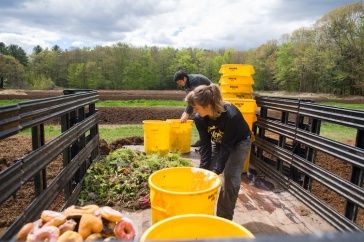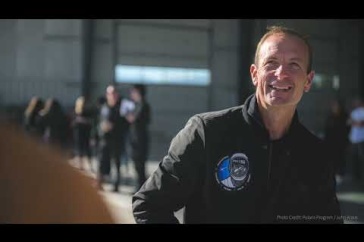When Holocaust survivor Inge Auerbacher was 7 years old, the Nazi regime planned to murder every Jew in her hometown. Auerbacher’s family was one of many ordered to Latvia to be killed in a mass execution, but her father’s service for Germany in World War I spared them. Instead, in 1942, the Nazis sent them to the Terezin concentration camp in Czechoslovakia (current day Czech Republic).
Auerbacher spoke recently at UNH as part of the Memorial Union Building Current Issues Lecture series. The lecture was sponsored by UNH STAND Anti-Genocide Coalition, Amnesty International, Hillel and the Memorial Union Student Organization (MUSO).
Out of 1,200 people in her transport, Auerbacher and her parents were among the 13 who survived. The distance between the train’s final stop and the camp was too strenuous for many of the elderly captives after the two-day journey from their village with little food.
“They couldn’t walk the two kilometers to the town, so they fell and died along the way. Many people in the village saw them and saw us and did nothing and asked nothing,” Auerbacher said. More than 33,000 people died in the ghetto, many from malnutrition and disease. Two-thirds of Terezin’s prisoners were sent to death camps.
“Lunch was a little bit of potato, radish, and murky soup. It was not enough to live but not little enough to die. Many people got sick with malnutrition,” said Auerbacher. “We would dig around in the trash to try to find food. Maybe potato scraps or crumbs of bread. I remember finding a mouse that had starved because even it could not find enough scraps to survive.”
Prisoners pumped water from polluted wells, and lice and bedbugs infested cramped living quarters. The ill were forced to share beds, spreading diseases and receiving little treatment, if any. Auerbacher and other prisoners began each day by standing at attention while guards counted them. But it was a ruse; the guards always knew how many people there were, Auerbacher said. One day, when children and mothers were ordered to separate, Auerbacher did not obey.

“We held onto each other, and this one guard came up to my mother and beat her terribly with his gun,” she said.
While at Terezin, Auerbacher witnessed the camp’s inspection by the International Red Cross. Before they arrived, the Nazis beautified the camp, giving some children sandwiches and putting up signs that read “School” and “Playground” where there were none.
“What they did not show them was the crematory. Almost every night somebody died,” Auerbacher said.
To make up for lost years of schooling, imprisoned teachers taught children from memory. Those with medical training became nurses, and artists continued to create. “We had many artists. If they were caught they were taken to the camp prison, shot on sight or sent to Auschwitz,” Auerbacher said.
The Soviet Army liberated Terezin on May 8, 1945, when Auerbacher was 10 years old.
“We knew at that time that many of our families would not come back. It was not a jubilant celebration. It was muted joy,” Auerbacher said.
During her talk, Auerbacher stressed the importance of being an active bystander rather than a passive one. “Had people done something, not just stood by, this terrible thing would not have happened,” she said. “So many people did nothing. If you do nothing you are just as guilty. There were too many bystanders.”
Throughout all this, Auerbacher had kept her doll, Marlene, named after German-American actress and singer Marlene Dietrich for her blond hair and blue eyes. “That doll was given to me by my grandmother when I was two years old. It was very important to me,” Auerbacher said. “A doll with blue eyes and blonde hair. So I was a little Jewish girl with a Nazi doll walking around a concentration camp.”
Auerbacher donated Marlene to the Holocaust Museum in Washington D.C., where she is available to view upon request.
Auerbacher has been speaking internationally since 1981 in an effort to ensure the Holocaust is never forgotten and to raise awareness about children’s suffering during genocide. After graduating from Queens College, she spent 38 years working as a chemist. Auerbacher has published six books and more than 50 poems and articles. She received the Ellis Island Medal of Honor in 1999 (fellow honorees included former Secretary of State Hillary Rodham Clinton, Chief Justice of the Supreme Court William Rehnquist and Sen. John Glenn). She also received the Louis E. Yavner Citizen Award in 1999.
-
Written By:
Elizabeth Fiske '18 | Communications and Public Affairs | epf2002@wildcats.unh.edu

















































